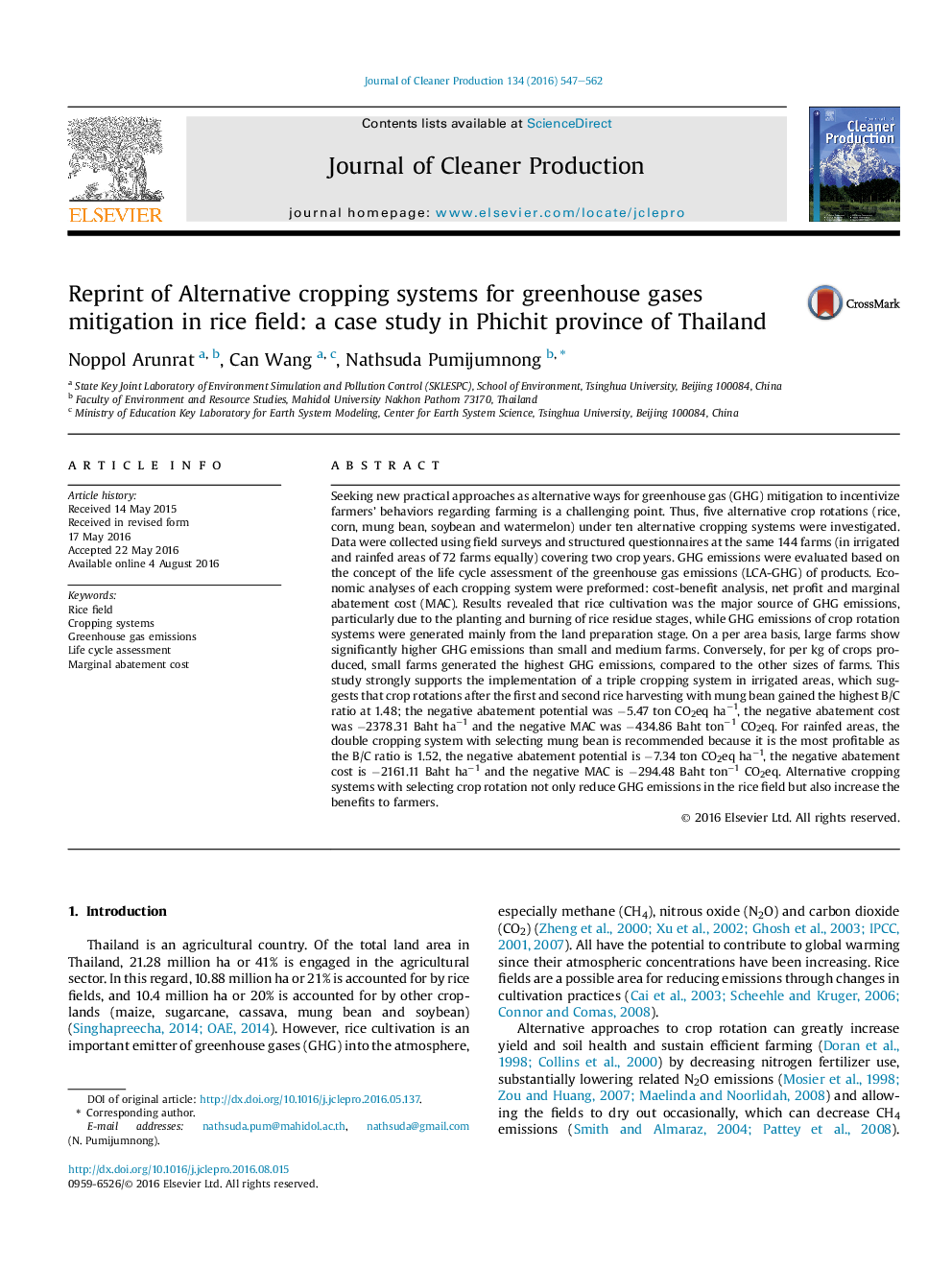| کد مقاله | کد نشریه | سال انتشار | مقاله انگلیسی | نسخه تمام متن |
|---|---|---|---|---|
| 1744018 | 1017949 | 2016 | 16 صفحه PDF | دانلود رایگان |
• Five alternative crop rotations (rice, corn, mung bean, soybean and watermelon) under ten alternative cropping systems were investigated.
• A triple cropping system with selecting mung bean after the first and second rice harvesting are recommended for irrigated areas.
• A double cropping system with selecting mung bean after the first rice harvesting is recommended for rainfed areas.
• Alternative cropping systems with selecting crop rotation are effective methods, particularly in rainfed areas and the dry season.
Seeking new practical approaches as alternative ways for greenhouse gas (GHG) mitigation to incentivize farmers’ behaviors regarding farming is a challenging point. Thus, five alternative crop rotations (rice, corn, mung bean, soybean and watermelon) under ten alternative cropping systems were investigated. Data were collected using field surveys and structured questionnaires at the same 144 farms (in irrigated and rainfed areas of 72 farms equally) covering two crop years. GHG emissions were evaluated based on the concept of the life cycle assessment of the greenhouse gas emissions (LCA-GHG) of products. Economic analyses of each cropping system were preformed: cost-benefit analysis, net profit and marginal abatement cost (MAC). Results revealed that rice cultivation was the major source of GHG emissions, particularly due to the planting and burning of rice residue stages, while GHG emissions of crop rotation systems were generated mainly from the land preparation stage. On a per area basis, large farms show significantly higher GHG emissions than small and medium farms. Conversely, for per kg of crops produced, small farms generated the highest GHG emissions, compared to the other sizes of farms. This study strongly supports the implementation of a triple cropping system in irrigated areas, which suggests that crop rotations after the first and second rice harvesting with mung bean gained the highest B/C ratio at 1.48; the negative abatement potential was −5.47 ton CO2eq ha−1, the negative abatement cost was −2378.31 Baht ha−1 and the negative MAC was −434.86 Baht ton−1 CO2eq. For rainfed areas, the double cropping system with selecting mung bean is recommended because it is the most profitable as the B/C ratio is 1.52, the negative abatement potential is −7.34 ton CO2eq ha−1, the negative abatement cost is −2161.11 Baht ha−1 and the negative MAC is −294.48 Baht ton−1 CO2eq. Alternative cropping systems with selecting crop rotation not only reduce GHG emissions in the rice field but also increase the benefits to farmers.
Journal: Journal of Cleaner Production - Volume 134, Part B, 15 October 2016, Pages 547–562
